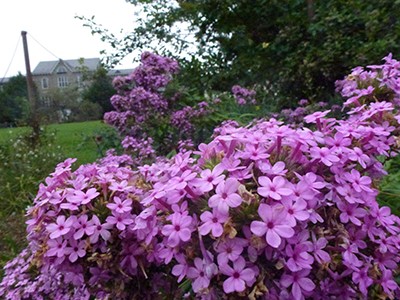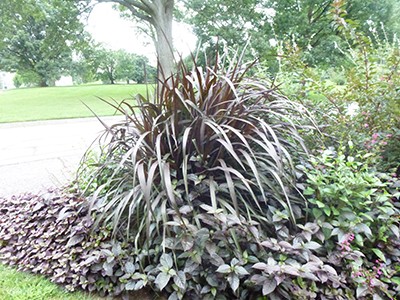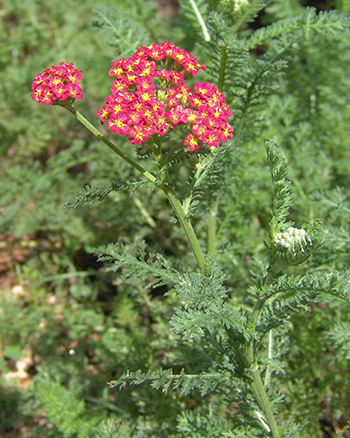Plants of the Week: August 21
Phlox paniculata ‘Jeana’
As the summer wears on it can be difficult to maintain color in your garden, so it’s good to keep some plants in your garden that show off their flowers later in the season. P. paniculata ‘Jeana’ can be found all over campus, but it is particularly striking in the Dean Bond Rose Garden.
As the lavenders and sages finish their active flowering, this garden phlox rises up four to six feet, making sure that you can see its lavender flowers. Garden phlox is native to eastern North America and was one of the first plants transported back to England during the colonial period. It was highly valued for its bright flowers, and the leaves were often used for making teas.
‘Jeana’ is particularly resistant to powdery mildew, unlike many other Phlox cultivars. It was named after the woman who discovered it, Jeana Prewitt, in Nashville Tennessee. When planting this phlox make sure to give it full sun. This plant gets tall and the flower panicles can be very dense so consider setting phlox in the back of a garden bed to avoid covering up or blocking other plants.
If you want to give this gardening gem a try, Phlox paniculata ‘Jeana’ will be available for purchase at the Scott Arboretum Selections: Fall Sale on September 15 to 17. photo credit: G. Wermeling
Pennisetum Vertigo ® Purple Fountain Grass
Grasses are not typically the first choice for ornamental/pleasure gardens. One might instead think of the turf grass on their lawn, or an ever encroaching stand of bamboo the neighbor has.
Pennisetum, or fountain grasses, can grow upwards of 5 feet tall, and display fantastic colors. Species of fountain grass are found all over the world, including the cereal grain, millet. The Terry Shane Teaching Garden has several of these grasses.
Vertigo ® was cultivated specifically for its deep purple foliage. This combined with its height results in quite a dousing of color for your garden. The leaf color is not seasonal, so as long as individual is healthy the leaves will retain their purple color.
Vertigo ® is an annual in this area, zone 7. It cannot survive temperatures below 15 degrees. Dead foliage can be removed in early winter or left till early spring. The dead foliage will retain its shape during snowfalls and looks quite fetching when covered with snow. photo credit: G. Wermeling
Achillea ‘Strawberry Seduction’
Achillea ‘Strawberry Seduction’ is being grown in the Cut Flower Garden behind the Wister Center. As its name implies, ‘Strawberry Seduction has a vibrant red flower color. It is also very compacted, never growing more than two feet tall. It likes full sun and very well drained soil.
Achillea, yarrow, responds well to bi-yearly division, although in a suitable environment it can become invasive. Yarrow is well regarded in butterfly gardens for attracting healthy insects and pollinators, while repulsing pests, deer, and rabbits. photo credit: R. Robert








No Comments